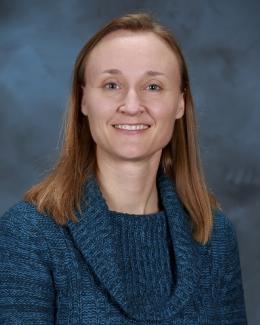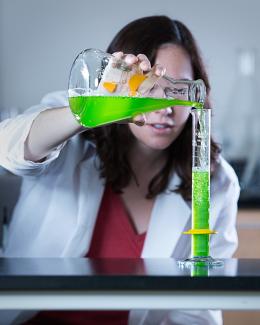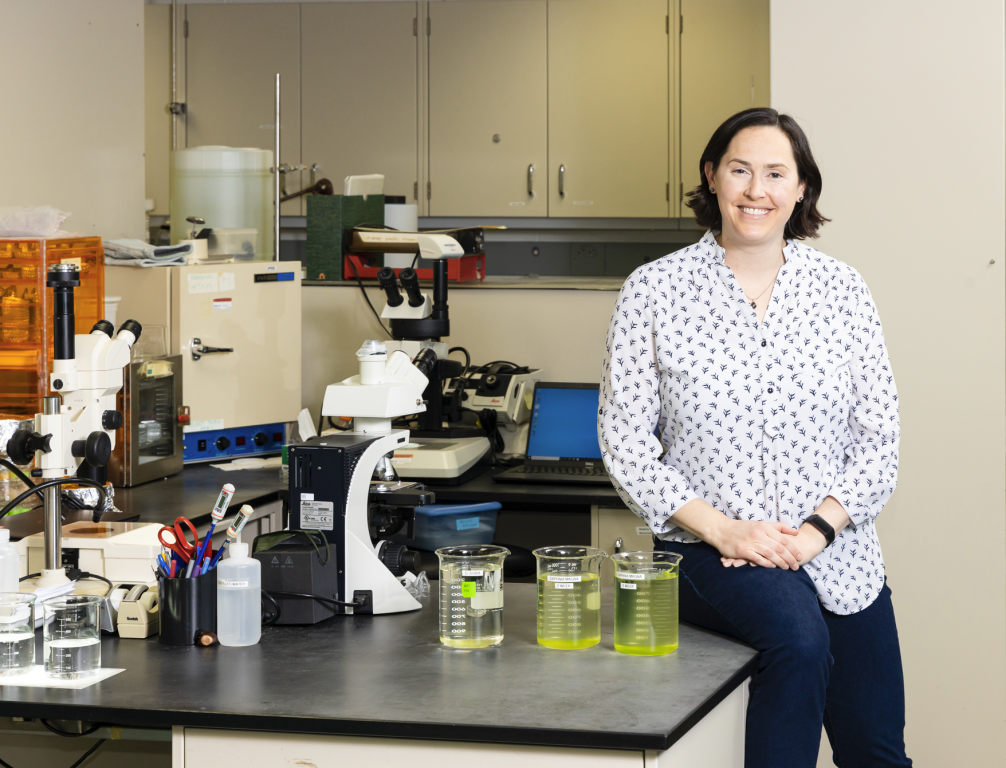
Stepping into the Aquatic Ecology Laboratory at the Department of Energy’s Oak Ridge National Laboratory, you can hear the sound of bubbling water. It’s the background music for Louise Stevenson as she moves about her day, exploring what aquatic species like fish, algae or tiny crustaceans can tell us about how contaminants may be affecting the nation’s water.
Stevenson is the principal investigator for the Environmental Toxicology Laboratory, which sits within the Aquatic Ecology Lab facility. In the Biodiversity and Ecosystem Health group at ORNL she uses her expertise as an environmental toxicologist to evaluate the effects of stressors such as chemicals and other contaminants on aquatic systems.
Projects in the "tox” lab, as Stevenson calls it, aim to characterize the impact of human-made stressors on natural systems. For aquatic systems, this includes water discharged from industrial, municipal and agricultural sources that flow directly into surface water.
To understand the effects of contaminants on an aquatic ecosystem, Stevenson uses regulatory testing and model organisms, which are well-studied organisms that allow her to make inferences at the population level. She works most often with Daphnia magna, small planktonic crustaceans related to lobsters and crabs. Also known as “water fleas,” Daphnia are found in ponds and other bodies of water. Daphnia are an essential component of Stevenson’s environmental research because they have short life cycles and are sensitive to the presence of toxins in the water, exhibiting measurable changes in their activities that act as a gauge for how other aquatic organisms might be affected.
“I consider Daphnia kind of the ‘canary in the coal mine’ of aquatic toxicity,” Stevenson said. “They are filter feeders, so they interact with a large volume of water and are also very sensitive organisms. They are widely studied, so we know a lot about how Daphnia respond to various abiotic and biotic stressors, which we can leverage into models of individuals and populations of Daphnia to predict impacts beyond the limits of our experimental design.”
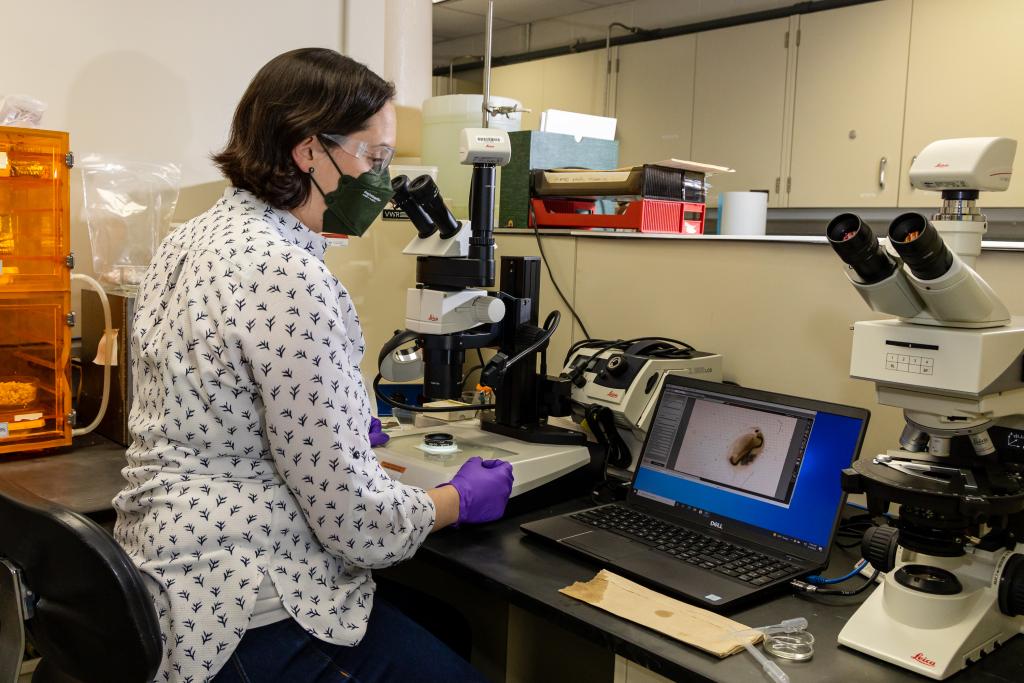
Improving toxicity techniques
Stevenson is working to develop a framework that models and predicts how environmental stressors trigger changes across scales from individuals to populations and ecosystems. Her primary focus is on connecting changes in gene expression to an individual’s stress response, such as a fish making more of a particular enzyme in response to a toxin in the water. She is interested in applying findings about individual toxicity responses to the management of entire populations and ecosystems.
“We’re trying to mitigate ecological risks on these systems as a whole,” Stevenson said. “Extrapolating effects from individuals up to populations and communities can help scientists understand ecological risks at higher biological levels, where processes and interactions become more complex.”
Current best practices for environmental monitoring use standardized testing that minimizes variability on purpose. Stevenson is working on advancing environmental monitoring techniques to make them more efficient, effective and ecologically relevant. “While it’s important to do, these tests are so standardized that you’re going to get the same results with the same conditions every time in any lab,” Stevenson said. “Monitoring the environment is crucial in understanding the anthropogenic effect that chemicals and other existing and emerging contaminants have on the natural environment.”
Stevenson’s collaboration with scientists in other divisions at ORNL is an essential component of her work and demonstrates a core value at the laboratory: teamwork. “We’re working with material scientists who are developing novel lubricants for turbines deployed in aquatic systems,” she said. “As new lubricants are developed, we test the toxicity compared to those commercially available; this way the formulation can be refined.”
Stevenson is also studying the toxicity of per- and polyfluoroalkyl substances, or PFAS, synthetic chemicals widely used in consumer products to confer resistance to water, grease and oil. These long-lasting chemicals, frequently called forever chemicals, can be found in soil, air and water. Studies have shown they are linked to harmful health effects because of their persistence in the environment. With funding from the Department of Defense’s Strategic Environmental Research and Development Program, researchers at ORNL are investigating the toxicity of PFAS in aqueous firefighting foam.
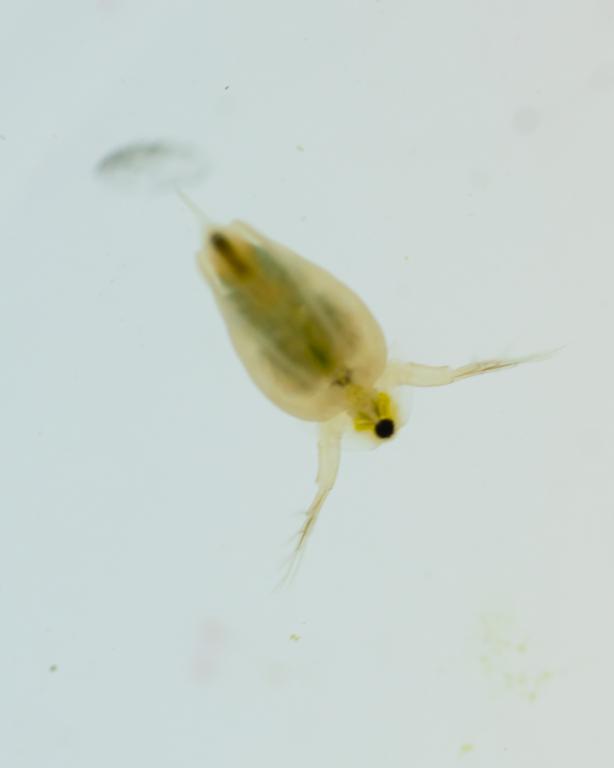
Family beach trips nurture an interest in the aquatic environment
Stevenson first became interested in science on family trips to the ocean. She grew up in landlocked Dallas, Texas, but those beachside vacations and her natural curiosity inspired her to consider a career in marine biology.
She pivoted to environmental toxicology in college after working on a project examining Siamese fighting fish and how they are affected by plant-based hormones like those discharged from some papermill operations. Under the influence of those phytoestrogens, the fish experienced behavioral and neural changes.
“What I found,” Stevenson said, “is that the problem of just one little fish in one little beaker in one little lab at one little college actually has applications to the whole natural world.”
She discovered something more as she pursued a career in science. “As I got more experienced and got my feet wet literally and figuratively, I realized that I actually liked being in a lab with the ability to control as many variables as possible to better understand these systems,” Stevenson said. Her work has largely pivoted toward improving lab-based testing and analysis as a result.
Stevenson received a bachelor’s degree in biology from Amherst College in Massachusetts and holds a doctorate in ecology from the University of California, Santa Barbara. Before joining ORNL in 2020, she was an assistant professor of environmental toxicology in the Department of Biological Sciences at Bowling Green State University.
She praises the research environment in ORNL’s Environmental Science Division, describing an atmosphere in which a diverse group of scientists bring their unique backgrounds, expertise and skills to study the anthropogenic effects of energy use on the environment. Using both traditional monitoring methods such as community sampling and novel research methods allows the group to maintain and continue collecting data on species and ecosystems.
“We’re maintaining active research programs in keeping a multidecade dataset going with really rich, frankly beautiful data,” Stevenson said. “But we’re also developing novel methods to push the science forward. We want to develop new ways of conducting this monitoring that will be potentially more efficient, more effective and cheaper.”
Outside of the tox lab, Stevenson enjoys reading and spending time with her family.
Stevenson is also a strong advocate for women’s representation in science. She is the immediate past chair for Women in Science and Engineering, or WiSE, an ORNL employee resource group that is part of the laboratory-wide Woman’s Alliance Council. Through her involvement in WiSE, she has made numerous connections with others and works toward building a supportive environment to increase the retention of women at the lab.
UT-Battelle manages ORNL for the Department of Energy’s Office of Science, the single largest supporter of basic research in the physical sciences in the United States. The Office of Science is working to address some of the most pressing challenges of our time. For more information, please visit energy.gov/science. — Gabriela Vara
